Royal Lancastrian ware is most famous for its high lustre glaze finishes associated with the designer Gordon Forsyth. The name Lancastrian was used for the new ware due to the location in the county of Lancashire. ‘Cunian’ glazes were named after the close proximity to Manchester. Some of the more famous glazes used by the Royal Lancastrian Pottery Company included sunstone, eggshell, crystalline and aventurine. One of the most notable, Lancastrian Lustre, was exhibited at the Franco-British Exhibition of 1908. In 1913, the Royal warrant was granted and the firm became Pilkington’s Royal Lancastrian Pottery.
Potteries Auctions can identify and provide valuations on a wide range of Royal Lancastrian pottery at auction.
Popular Royal Lancastrian Items at Auction

Royal Lancastrian lustre vase decorated all around with scrolling foliage
£320
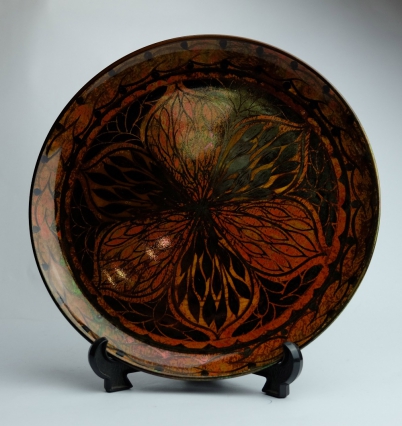
Royal Lancastrian Lustre wall plaque decorated with a flower head by Gladys Rogers
£220
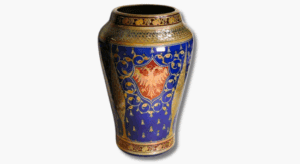
William Mycock for Pilkingtons Royal Lancastrian, An impressive lustre vase
£920
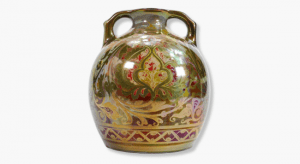
Richard Joyce for Pilkington Royal Lancastrian lustre two handled vase
£520
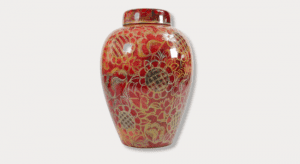
William S Mycock for Pilkington Royal Lancastrian lustre ginger jar & cover
£500
Got an interesting item?
Speak to one of our experts to find out the value of your pottery, antiques, jewellery, & collectables
Book a valuationWhether you are looking to buy or sell Royal Lancastrian collectables or vases, the team of experts at Potteries Auctions can help you find the piece you are looking for, or value your items for sale. Request a call back if you are looking for a valuation and are seeking to sell some Royal Lancastrian collector pieces at auction.
Royal Lancastrian Pottery Facts
- Pilkington’s Lancastrian Pottery & Tiles was a manufacturer of tiles, vases and bowls, based in Greater Manchester. Established in 1892, the company produced pottery until the end of the 1930s.
- By 1903, the company had developed an opalescent ceramic glaze called Lancastrian, which quickly became popular.
- High lustre glaze finishes were produced from 1906 under designer Gordon Forsyth, and Lord Derby owned several pieces. In 1913, King George V and Queen Mary visited Lord Derby and saw these pieces, and then granted the Royal Warrant, thus becoming Pilkington’s Royal Lancastrian Pottery Company.
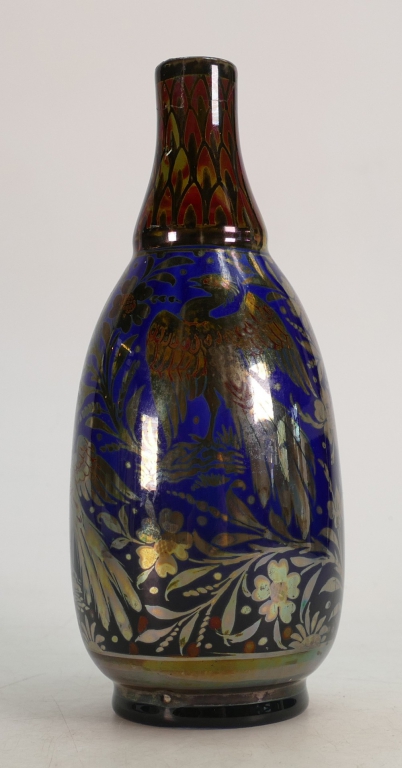
The History of Royal Lancastrian Pottery
The Royal Lancastrian Pottery Company was an innovative producer of decorative pottery, whose distinctive designs earned the company a royal warrant.
The company began life in Clifton, Lancashire, as the result of a failed coal mine. In 1889, the Clifton and Kersley Coal Company had sunk a pair of shafts to access coal seams next to the geological feature known as the Pendleton Fault. Excessive water seepage rendered the project unworkable, and the Pilkington brothers decided to try and produce glazed bricks with the marl that had been encountered. This also bore no fruit, however, as the marl proved unsuitable. Yet, by sheer chance, the secretary of the coal company happened to know William Burton, a chemist working for Wedgwood. Burton suggested that the marl would be better suited to making tiles – decorative tiles were very popular at the time. Burton was then invited to manage the company in 1891.
William Burton’s drive and charisma had enticed many skilled artists and craftsmen to join the company, such as Edward Thomas Radford, Richard Joyce, Charles Cundall, Gwladys Rodgers, W.S. Mycock, Dorothy Dacre, Jessie Jones and Annie Burton.
Pilkington’s designers were also of a similar calibre, experimenting and coming up with new types of glaze. These included curdled, aventurine, crystalline and sunstone, as well as variations in texture. These fruit skin glazes had a texture akin to that of orange peel or apricot skin. What brought Pilkington’s the most fame, though, was their lustre ware.
Tiles weren’t considered good enough to display the various new glazes being pioneered, so to show them off the company started producing pottery, with initial examples being produced using ware made by firth in Kirby Lonsdale.
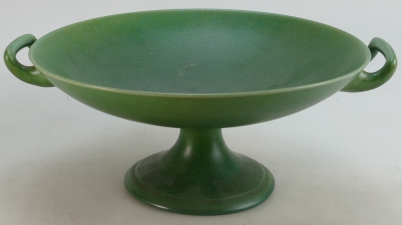
By 1903, the firm had developed an opalescent ceramic glaze, which was named ‘Lancastrian’. Then, in 1906, designer Gordon Forsyth was brought on board, and he became largely associated with high lustre finishes. The Lancastrian pieces were decorated in a variety of ways, often gilt, including geometric and foliate patterns, as well as depictions of various animals. Some had a classical influence, displaying ships, classical gods and Latin inscriptions. Many of the pieces that were made are quite elaborate, and certainly highly decorative.
Such was the quality and desirability of the Lancastrian wares, that pieces were being sold at Tiffany’s. Then, in 1913, Lord Derby hosted King George V and Queen Mary at his home, where he had several Lancastrian vases proudly on display. The King and Queen were so impressed with the items on display that permission for a royal warrant was granted. The company was then renamed Pilkington’s Royal Lancastrian Pottery Company.
In the years after the First World War, the high purchase cost of pieces, coupled with the departure of several artists, led to a decline in sales. 1928 did see a brief resurgence, with the introduction of the new lapis glaze, so-named for its resemblance to the semi-precious stone lapis lazuli. Sadly, though, the rebound was to be short-lived, and the company ceased its pottery line in 1938. Several attempts were made to revive the company in the decades that followed, but it was not to be.
Pilkington’s continued to manufacture tiles until 2010, when it became a victim of the recession, and the once-prestigious and acclaimed company was no more. Their legacy remains, however, in the beautiful pieces they created over the years,
Get In Touch
Potteries Auctions can collect items for auction from anywhere in the UK, and we can also handle large collections from all over the world, so just get in touch with us to discuss. We pride ourselves in our packing and shipping service to get goods out to purchasers, making it a perfect solution for buyers who can’t attend auctions in person.
Sign up for our newsletter
If you would like to receive advance notification of upcoming auctions and sale notifications, then please subscribe to either our text alerts or email newsletter via the buttons below.
